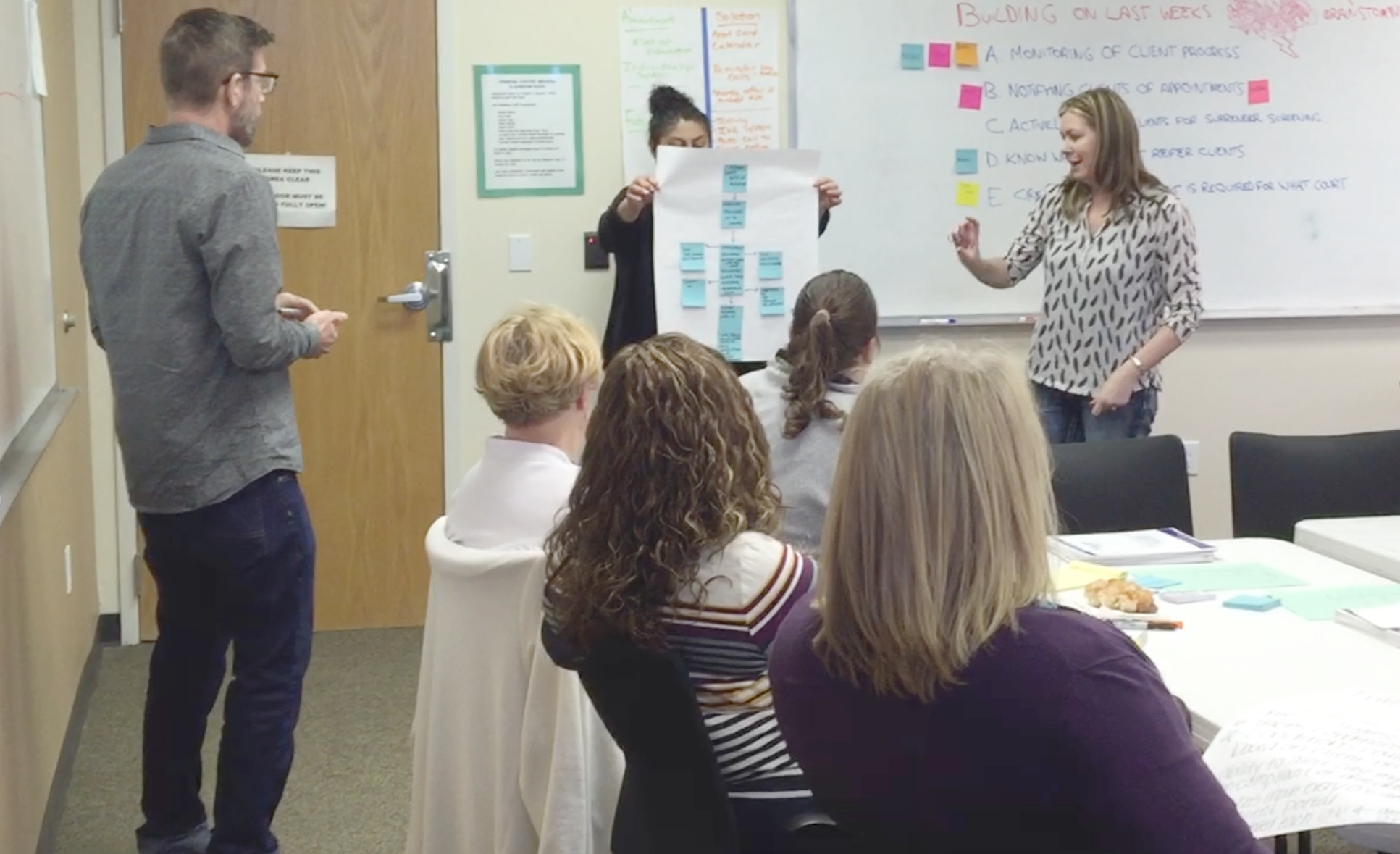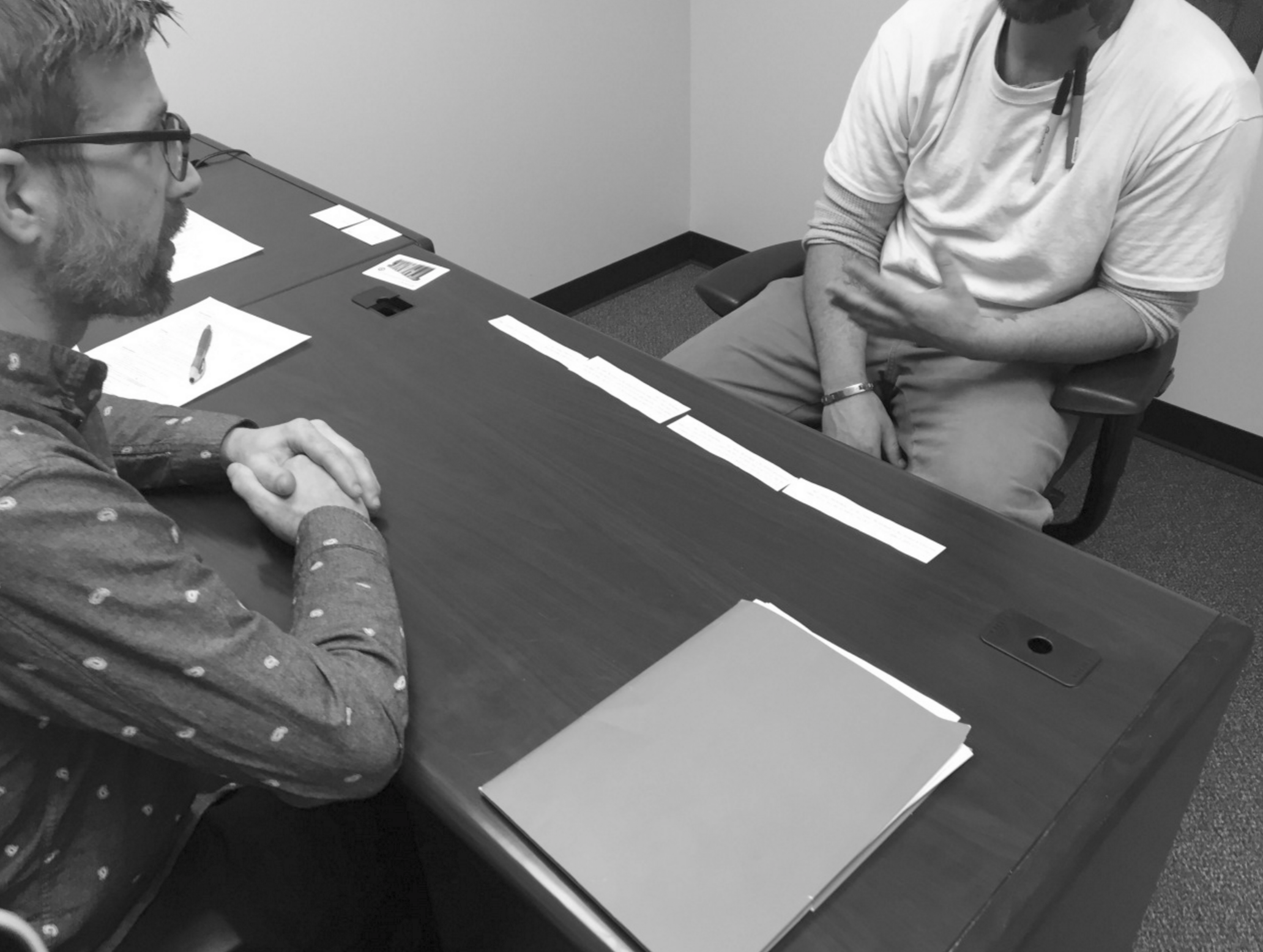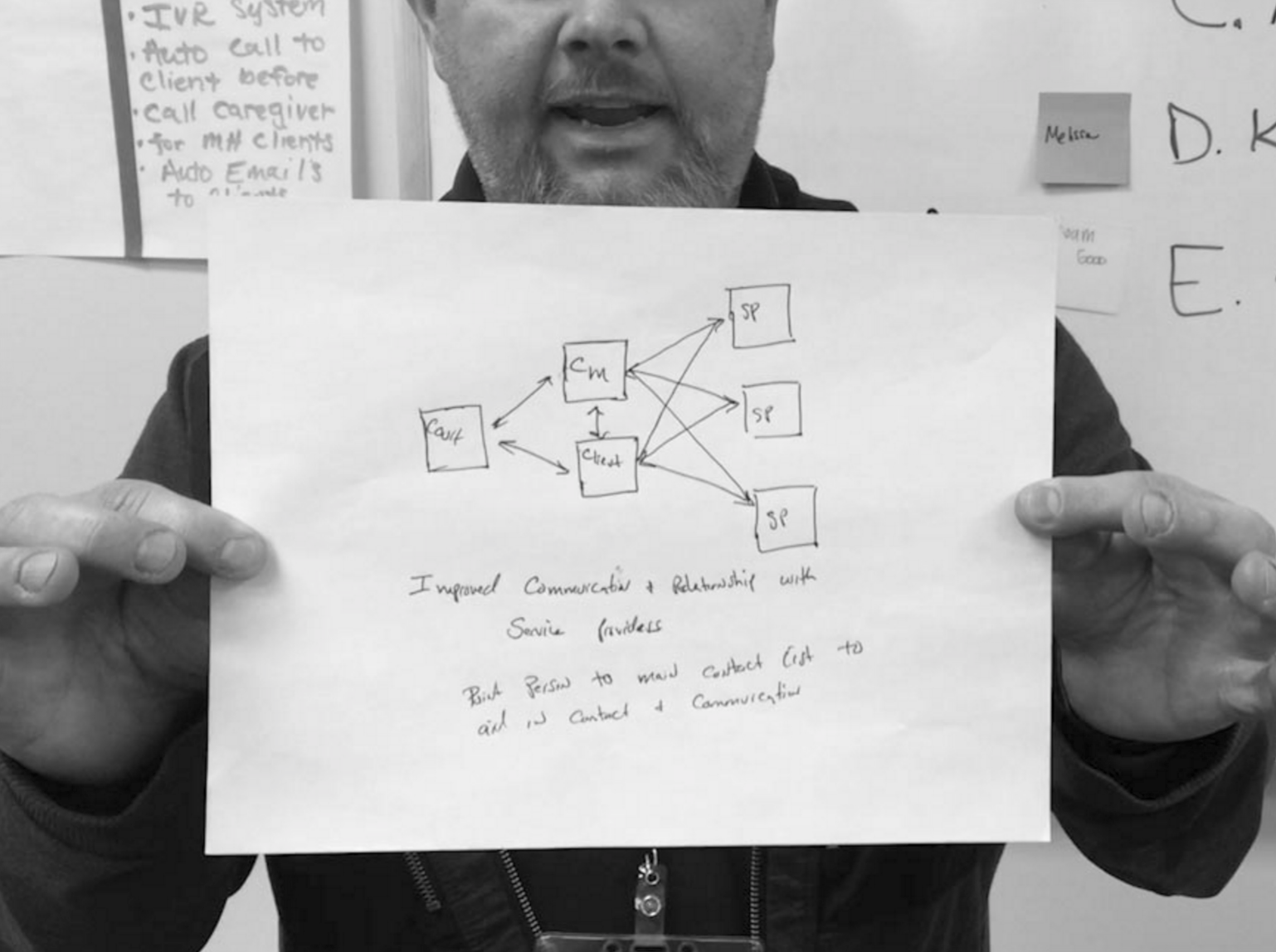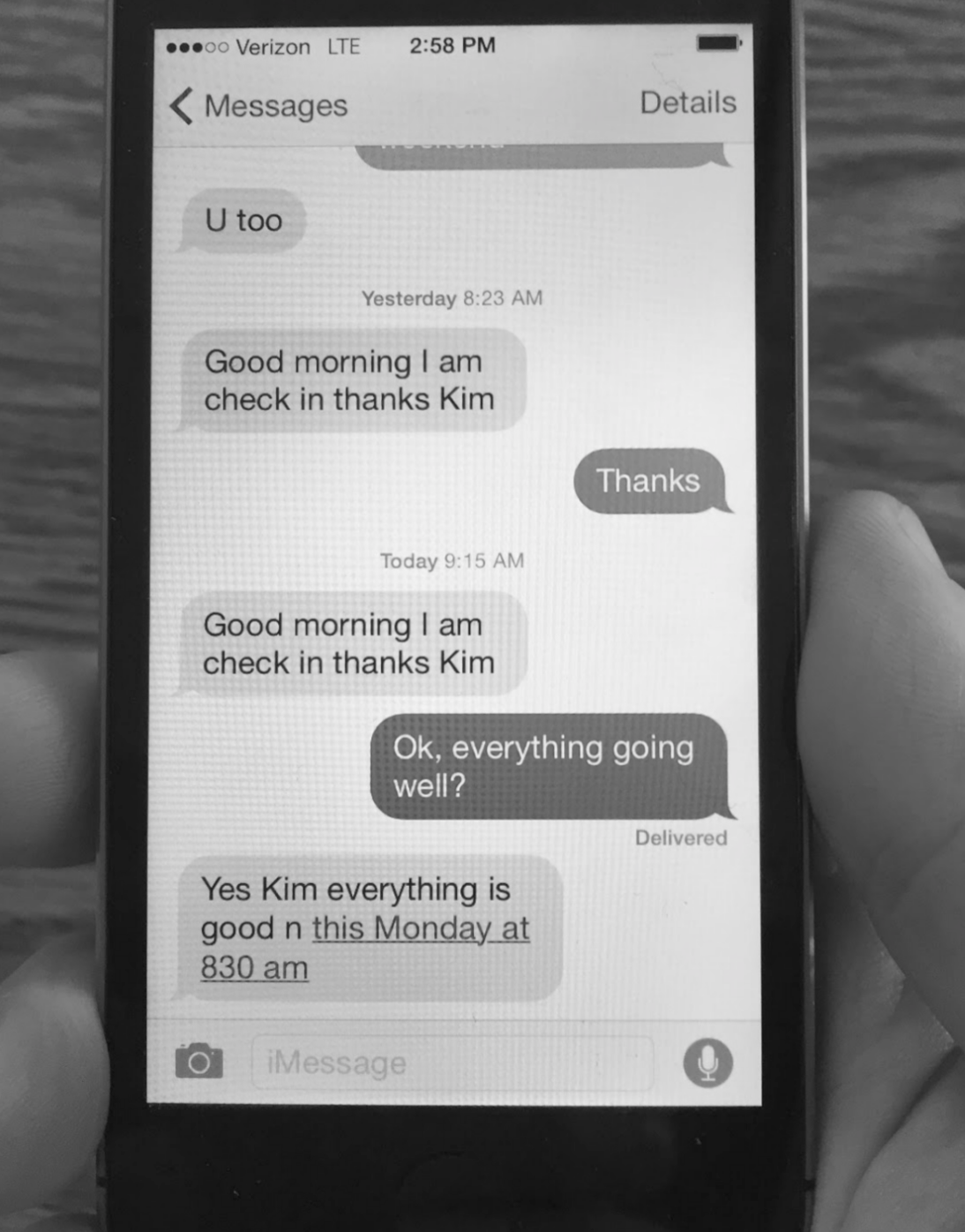Overview
The learning phase happens through user research focused on understanding of different groups involved, their relationships to the justice system and if and how our software reduces the number of people failing to appear. Interviews, observations and idea generating exercises with people in specific roles within the system to gain a deep understanding of common issues that arise as they work and navigate through it.
Main objectives of our research were to gain insights about how CJS clients view the justice system, barriers they faced in complying with supervision and the support systems that they relied on to help them through their supervision. We also needed to learn how staff and clients interact with each other and how our software could be best incorporated into their current workflow.
Patterns of behaviors towards supervision, differences in people's attitudes, and barriers to complying with supervision that we learned through user research changed the way we understood the problem, and what needed to be built in order to address it.

Workshop engaging case managers to identify and propose solutions to commonly indicated pain points.
Problem Statement Revision
A "first pass" of observation of case managers and clients in their meetings, in-depth interviews with individuals, and participatory activities like card sorts and system mapping enabled us to familiarize ourselves through immersion in the common issues and different perspectives on the problem we are tackling by those who deal with them daily - the clients, case managers, and supervisors. While some people are indeed simply forgetting their appointments, there are a myriad of social, emotional, financial, logistical, and institutional barriers that account for people failing to comply with their supervision. Some individuals are ambivalent to their complying with the justice system, people may have other things impeding them from avoiding re-arrest and life circumstances can play a role. We reshaped our development strategy toward facilitating two way communication through text, email and voice.
We learned that clients often prefer text messaging instead of calling because it allows them to respond to case managers on their schedule, makes difficult conversations easier and allows them to have a record at hand of important information related to their case. Case Managers like this option as well because it saves them time, allows them to have a record of their conversation and communicate with clients who are busy during work hours or prefer not to talk on the phone.
Altered Goal
Our goal changed from making a notification system about appointments to making it easier for clients and case managers to communicate with each other. Passive communication allows schedules to be easily communicated between case managers and clients. In addition, case managers can organize all client contact methods and devices, as well as make it easier for clients to ask questions and access information about their supervision.
Learn Build Measure / Delivery First



 Salt Lake County & Code for America, 2016 Mid-Year Report
Salt Lake County & Code for America, 2016 Mid-Year Report

